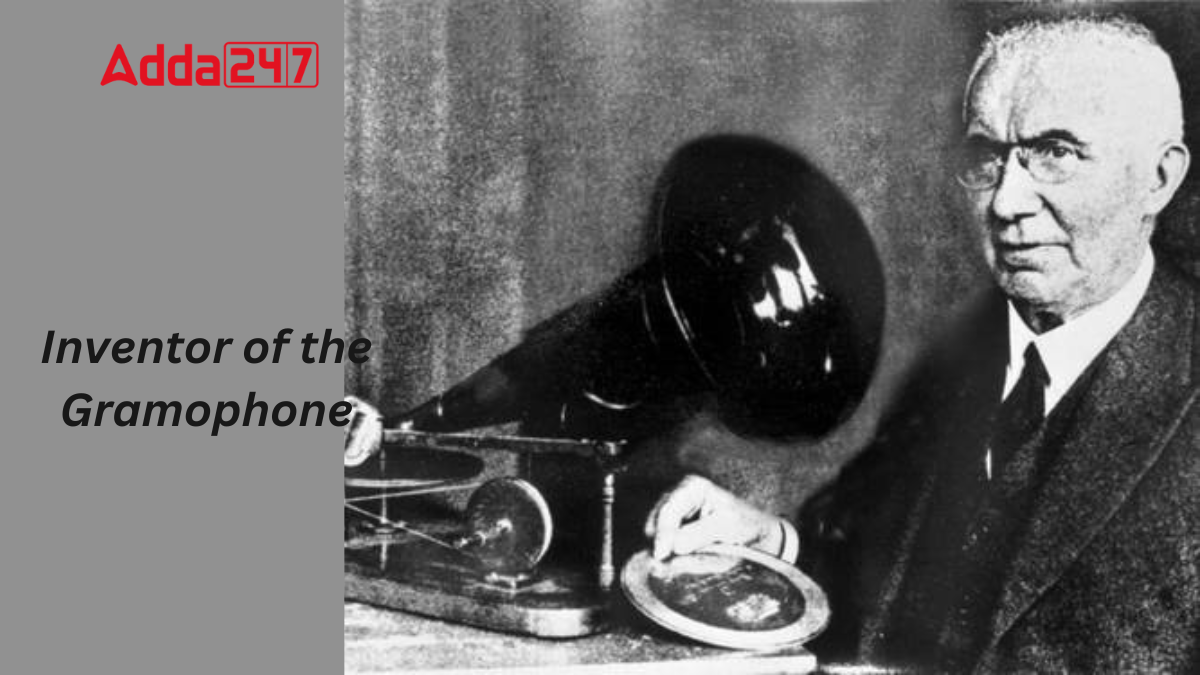The gramophone, invented by Emile Berliner in 1887, revolutionized sound recording and reproduction by using a stylus to etch sound waves into spinning discs. This device made music accessible in homes, popularized diverse genres, and spurred technological advancements in the music industry. Despite being replaced by modern technologies, the gramophone remains cherished by audiophiles for its unique analog sound. In this article, we will know about the inventor, history, advantages and disadvantages of gramophone.
Who Invented the Gramophone?
The gramophone was invented by Emile Berliner in 1887. Berliner, a German-born American inventor, developed key technologies in sound recording and reproduction. He is credited with inventing the disc record and the gramophone, significant advancements in phonography. He received several patents for his work, including one for the gramophone in 1887, which he later licensed to the Victor Talking Machine Company, the first major record company in the United States.
Working of the First Gramophone
The first gramophone worked by using a stylus to etch sound waves into a spinning disc, called a “gramophone record.” A horn attached to the top amplified the sound as the stylus ran over the grooves in the record. The gramophone required manual operation, including winding the spring motor, placing the needle on the record, and manually adjusting the turntable speed.
The Evolution of the Gramophone
The gramophone evolved significantly since its invention in 1887:
- Manual to Electric Motors: Early gramophones had spring motors that needed manual winding. These were later replaced by electric motors.
- Recording Process: The initial lateral-cut recording process was replaced by the microgroove process, allowing longer playing times.
- Sound Amplification: Large horns were replaced by smaller internal speakers.
- Automatic Record Players: These allowed for automatic changing of records.
- Record Speeds: 78 RPM records were replaced by 33 1/3 RPM and 45 RPM records, and LP (long-playing) records were introduced in 1948, holding up to an hour of music per side.
- Decline in Popularity: The introduction of cassette tapes in the 1960s and compact discs in the 1980s led to a decline in gramophone usage.
Impact of Gramophone on People’s Lives
The gramophone significantly impacted people’s lives in the early 20th century:
- Accessibility: It brought music into homes, making it accessible and personal for all social classes.
- Popularization of Music: It allowed people to listen to various music genres from different parts of the world.
- Job Creation: It created new jobs in the music industry, such as musicians, composers, and record producers.
- Technological Innovations: It led to new technologies in sound recording and reproduction.
- Entertainment Industry: It provided sound accompaniment for silent films in early cinema.
Advantages of Gramophones
- Affordable and accessible.
- Portable and easy to use.
- Enabled home listening.
- Popularized diverse music genres.
- Fostered technological innovations.
- Used in early cinema for sound accompaniment.
Disadvantages of Gramophones
- Sound quality was inferior to live performances and affected by record and needle condition.
- Limited record length (3 to 4 minutes per side).
- Required regular maintenance.
- Susceptible to damage from scratches and dust.
- Less durable compared to modern music players.
- Replaced by more convenient and higher quality technologies like radio and cassette tapes.
The Future of the Gramophone
The future of the gramophone is uncertain. While largely replaced by newer technologies, some people appreciate the analog sound and continue to use gramophones. Recent years have seen renewed interest in vinyl records and turntables. Some record labels release music on vinyl, and new turntable manufacturers produce high-quality turntables for audiophiles. Vintage gramophones are sought after as collector’s items and for decorative purposes. Despite its limited market, the gramophone may continue to have a small but dedicated following in the future.




 Which River is known as the Gold River o...
Which River is known as the Gold River o...
 Which Country is Known as the Land of Sp...
Which Country is Known as the Land of Sp...
 Which River Originates in Rajasthan and ...
Which River Originates in Rajasthan and ...







